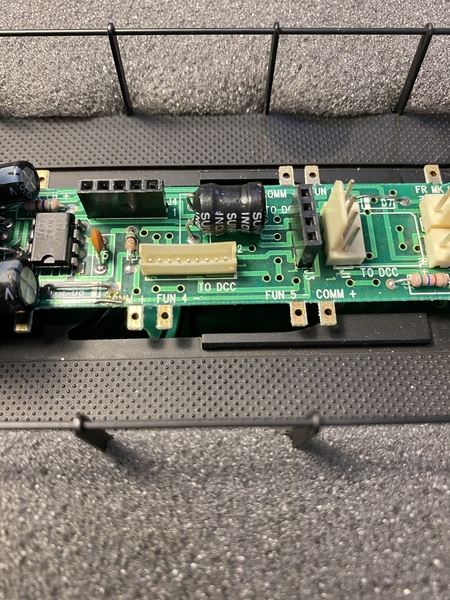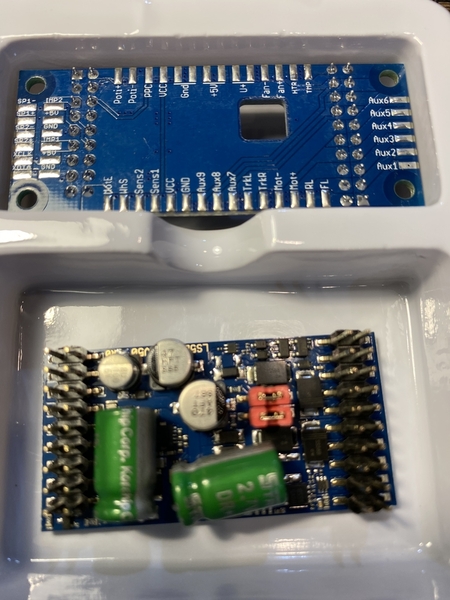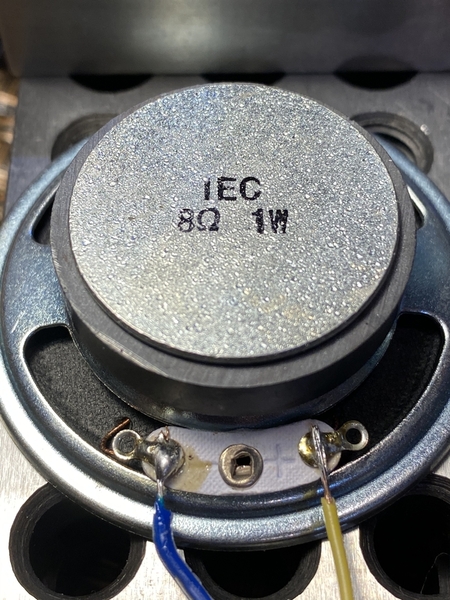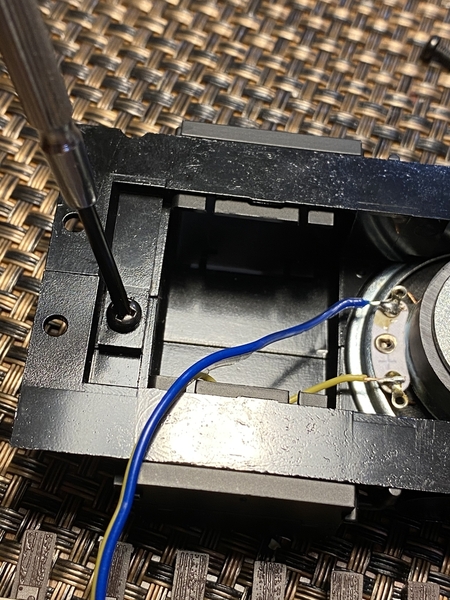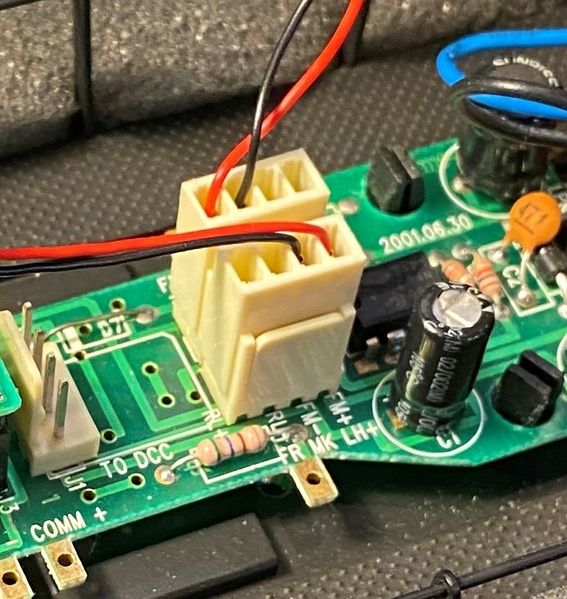Hello guys. I bought an older Atlas 2-rail RS-1 (Santa Fe 2396, part # 7876-1) which is straight DC but "DCC ready". First thing I had to do was clean out both of the gear boxes, which were frozen with gunk.
As many of you know, some of these Atlas locomotives came with a board that has a DCC bypass plug - I don't know if that's the official name of it, but that's my best description. In straight DC, the power passes from the board through this plug and back into the board, and all works as expected. When you want to convert to DCC, you remove this bypass plug and plug a 4-pin connector into the Atlas board which then has the 4 wires soldered to the DCC controller.
You can see the two 4-pin connectors going to the front head light and rear head light, and the small "DCC bypass board" plugged into the middle of the Atlas board.
Lighting pin connectors removed.
Close up of the "DCC bypass board".
Bypass board removed. There are 4 different connectors labeled "To DCC" on the Atlas board, but what comes supplied with the loco are a 4-pin plug and a nine-pin plug (with 8 wires), both of which have white receptacles above.
Here is the ESU LokSound 5 board.
Here is the 4-pin plug that comes with the Atlas loco, and description of which wires are which.
The 4 wires soldered in place.
The Atlas-supplied 4-pin plug slips into the Atlas board.
Put the two halves of the ESU controller together.
ESU ECOS immediately detects the new controller...
And we have DCC control.
So far, so good.
Connected a speaker and we have DCC sound (although the horn is incorrect, will have to reprogram using Lok Programmer).
Next up are the lights. According to the chart in the Atlas instructions, I need wires 4, 5, and 6 of the 8 wires on the 9-pin connector; pin-4 is for the rear headlight, pin-5 for the front headlight, and pin-6 for the common. I get those soldered to the ESU controller.
(sorry I don't have a picture of the 9-pin connector plugged into its spot in the Atlas board)
I fire up the DCC power, and no lights. I try forward and reverse, lights on, lights off, auxiliary lights on and off, no lights at all. At one point I saw a flicker in the rear headlight, but other than that, nothing. I start looking around the Atlas board closely, and reviewing my pictures, and I notice that in its original configuration (at least as shipped to me) the two wires from the rear headlight are feeding into pins on the light plug that correspond to the front marker lights (which should be ok, because when the rear headlight is on the front marker lights are on, and vice versa).
But just to make sure, I first try swapping the 4-pin light plugs, so that now (for example) the rear headlight wires are going to the front headlight spots on the Atlas board, still nothing. I put the 4-pin light plugs back where they belong, but switched the location of the wires, so that now the wires to the rear headlight are going to the rear headlight spots on the Atlas board. Still nothing. And every time I changed something on the board or 4-pin connectors, I tried every combination of lights on/off on my DCC controller. Nothing.
Fearing that I had burnt out the bulbs (which I thought would be impossible since they are still getting juice through the Atlas board) I unplugged the ESU DCC board, put back the DCC bypass plug, in other words put everything back the way it was originally, and the lights shine brightly.
So I'm confused why every other part of this seems to have worked as intended for a "DCC ready" loco, except the lights. I feel like I'm missing something REALLY simple.
Now, having said all of that (and thanks for reading this far), I am well aware that I could totally tear out the Atlas board entirely and wire everything directly to the ESU LokSound. However, that would require more soldering (which as you can tell from some of the pictures is not my strong suit) and installing resistors, etc. I was really trying to take advantage of the plug and play nature of this Atlas board to make the upgrade as simple as possible.
Lastly, the smoke unit on this RS-1 worked just fine in straight DC, with an on/off switch under the chasis, and I'm fine with continuing to operate it manually via the switch. However, IF I were to connect it to the ESU LokSound, is it as simple as just removing the two wires from the switch and soldering them to Fan- and Fan+? Then nothing gets soldered to HTR (smoke heater) and TMP (smoke temperature censor)? I'm assuming that this is all controlled by the small circuit boards attached to the Atlas smoke unit.
That's it for now. Thanks for reading all of that. Would love to hear some input on the smoke fiasco!







